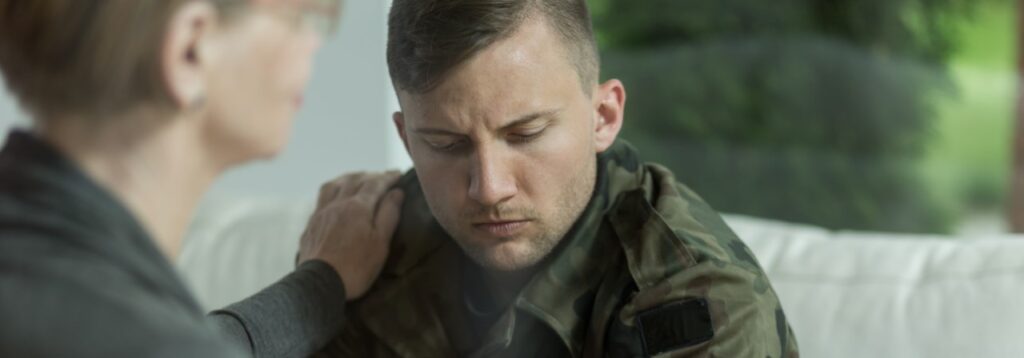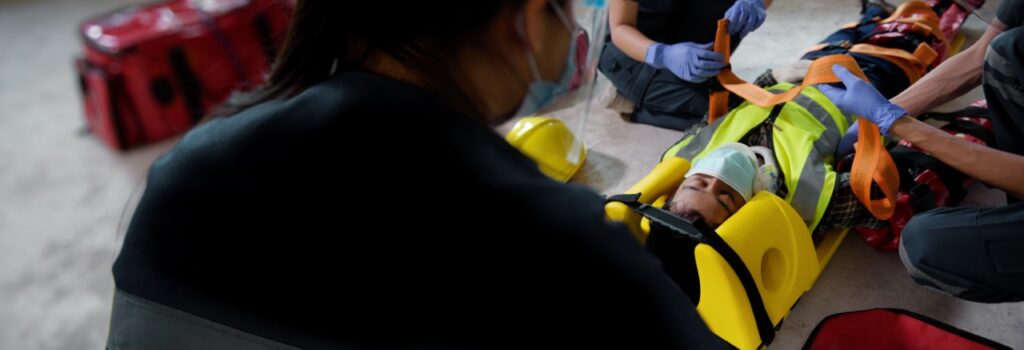Disclaimer: Discussions of trauma in this article do not reflect SCHC or GSWC’s interpretation of trauma in therapeutic settings. Articles such as this are published in the spirit of open-mindedness, knowledge building, and connection.
Trauma is something that plays a big role in many people’s lives. Many of us live with traumatic experiences of our own, though we may also be affected by trauma indirectly when we are exposed to other people’s trauma in our personal or professional roles.
In cases where we engage with other people’s trauma, it may unwittingly become our own indirect trauma. This indirect trauma can affect us vicariously, which is why the effects of indirect trauma are often called vicarious trauma.
What is Vicarious Trauma?
The British Medical Association defines vicarious trauma as “a process of change resulting from empathetic engagement with trauma survivors.”
The term usually describes negative changes experienced by people who engage empathetically with survivors of trauma. Trauma is a diverse concept and can include natural disasters, community violence, emergency incidents, sexual abuse, and many other types of traumatic events or situations.
Vicarious trauma can be experienced by first responders, counsellors, health professionals, and other professionals who regularly interact with trauma-affected individuals.
It can also be experienced by friends, family members, and community connections who are empathizing with or providing support to a survivor of trauma.
Vicarious Trauma and Secondary Traumatic Stress (STS)

Most of us are familiar with the idea that people who experience a traumatic event directly may later experience PTSD (Post-Traumatic Stress Disorder). We know that this may take the form of flashbacks, nightmares, severe anxiety, or a host of other symptoms.
What many people don’t realize is that in some cases, professionals or community members who engage with survivors of trauma may get similar symptoms to the person they are supporting, or other symptoms typical of PTSD. This sort of indirect PTSD is called Secondary Traumatic Stress (STS), and can be as serious and debilitating as a lived traumatic experience.
Here are a few ways that vicarious trauma may present itself for first responders and healthcare professionals:
- Pervasive negative feelings about a client’s trauma
- Taking work home, i.e. continuing to think about a client beyond what feels normal or healthy
- Blurring or crossing professional boundaries to support a trauma survivor
- A loss of hope, or a notable change in personal beliefs
- Finding ways to numb oneself or stay busy, such as overworking or using substances.
Other Ways Vicarious Trauma can Present Itself

Vicarious trauma doesn’t always look like secondary traumatic stress. In some cases, it can take other forms such as compassion fatigue, or burnout.
Compassion fatigue is a manifestation of vicarious trauma wherein an individual’s capacity to empathize with others is reduced as a result of being preoccupied with the experience of a trauma survivor or is worn down by a cumulation of such experiences.
Burnout is a condition that can be precipitated by the conditions or constraints of a workplace environment. From an organizational perspective, it may look like absenteeism, high staff turnover, low morale, or pervasive negativity. While burnout is a condition formally recognized by the WHO, not a disorder on its own, it can make those who suffer from it more vulnerable to developing mental health issues and disorders.
The Center on Trauma and Adversity further elaborates on the distinctions between these various manifestations of indirect trauma.
Resources for Professionals
Certain occupations, such as first responders, may be witness to traumatic incidents fairly regularly, and may even have procedures or practices in place to mitigate vicarious trauma. For example, the BC Search & Rescue Association has a Critical Incident Stress Management (CISM) protocol that gets triggered automatically in specific cases as a way to be proactive about SAR volunteers’ lived or vicarious trauma. Members may also instigate the CISM protocol for themselves or their team with ease, and at any point.
There are also various province-specific programs targeted for first responders more generally, such as the BC First Responders’ Mental Health, which provides resources not just for receiving help, but also for giving help to others.
Resources for the General Public
As mentioned earlier, vicarious trauma is not restricted to first responders or healthcare providers. The average person may also experience vicarious trauma as part of supporting a loved one or a member of their community. In this case, they may wish to familiarize themselves with more general resources, such as the HeretoHelp project by BC Partners for Mental Health and Substance Use Information.
Unfortunately, figuring out which resources are appropriate, relevant and accessible for an individual’s unique situation can feel like a full-time job. As part of its approach to rehabilitation, the Post-Treatment Services Teams at Sunshine Coast Health Centre and the Georgia Strait Women’s Clinic work with clients to develop an individualized and relevant resource list, which makes up part of their Post-Treatment Care Plan.
A Clinical Approach to PTSD and Vicarious Trauma
In some cases, a clinical approach can be hugely beneficial to an individual experiencing PTSD or vicarious trauma.
In terms of treatment options, the Sunshine Coast Health Centre is unique in that it offers a specialized Occupational Trauma Treatment program, which combines a meaning-and-purpose based approach with diverse and effective therapies such as EMDR, Somatic Experiencing Therapy, and Hypnotherapy to deliver care to professionals who have spent so much of their time and energy caring for others, but may need trauma-informed care themselves.
SCHC’s trauma programs are by no means limited to first responders or healthcare professionals. If you or somebody you know needs support with lived or vicarious trauma, please contact the Sunshine Coast Health Centre or the Georgia Strait Women’s Clinic today.
———————–
Ionatan Waisgluss is a writer, educator and web developer living in the qathet region of British Columbia. He is the founder of SquareByte.ca, and a volunteer with Powell River Search & Rescue. Ionatan is a survivor of lived and vicarious trauma, and a heartfelt believer in healing and hope.



